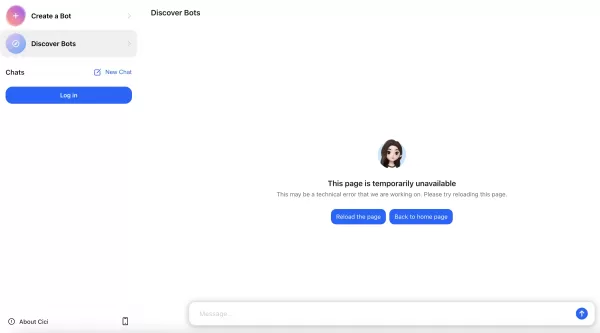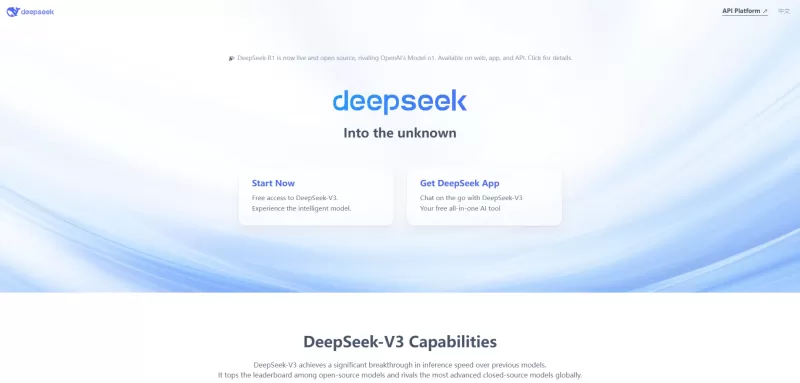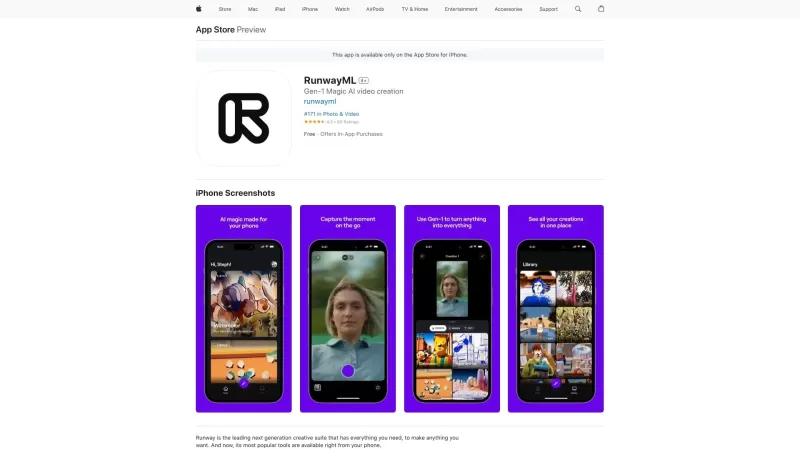Explore Earth Virtually: ChatGPT and Google Earth Vacation Planner
Ever felt the urge to escape the daily grind but found yourself stumped on where to go? Let's dive into a cool way to plan your next getaway without even stepping outside your door. By harnessing the power of ChatGPT and Google Earth, you can embark on a virtual vacation that's both exciting and relaxing. Whether you're dreaming of sandy beaches, majestic waterfalls, or towering mountains, this guide will show you how to bring those dreams to life, all from the comfort of your couch.
Why You Need a Virtual Getaway
In our hectic lives, taking a break is crucial for our mental and emotional health. Yet, the thought of planning a vacation can feel overwhelming. That's where the magic of ChatGPT and Google Earth comes in. They offer a seamless way to explore new destinations virtually, providing an immersive experience right at home. By simply answering a few questions about your preferences, ChatGPT can tailor a list of destinations that suit your interests and climate preferences. It's like having a personal travel agent, minus the hassle!
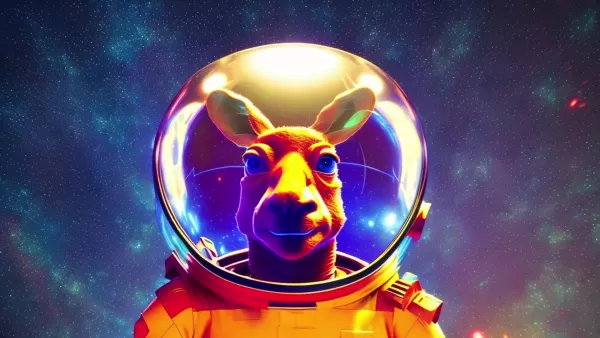
Generating Destination Ideas with ChatGPT
Choosing where to go is often the toughest part of vacation planning. But with ChatGPT, it becomes a breeze. By asking you about your climate preferences, whether you lean towards urban or rural settings, and your interests in history, nature, or culture, ChatGPT can suggest a curated list of places you might love to visit virtually. It's like having a brainstorming session with a friend who knows the world inside out.
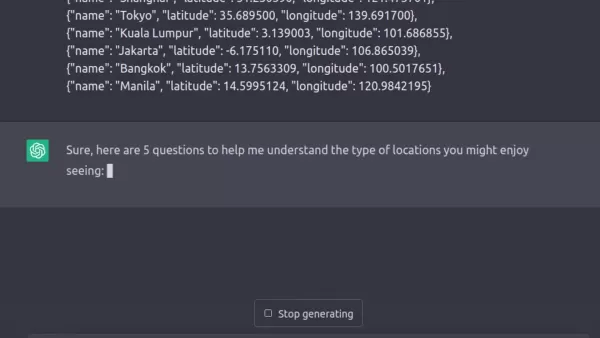
Just ask ChatGPT something like, "Ask me 5 questions to figure out locations on earth that I might enjoy seeing in a virtual tour," and you'll be on your way to discovering new spots that match your vibe. You can refine these suggestions through further interaction, making the process not just efficient but also fun.
Automating Google Earth Tours with Python
Once you've got your list of dream destinations, it's time to bring them to life in Google Earth. To make this process smoother, you can create a Python script that automates the creation of a virtual tour. This script uses KML (Keyhole Markup Language) files, which Google Earth reads to navigate your chosen locations. Here's a quick rundown of how the script works:
- Import Libraries: Start by importing the necessary libraries, like simplekml, to handle KML file creation.
- Define Locations: Enter the destinations from ChatGPT, along with their latitude and longitude, into the script.
- Create KML Object: Set up a new KML object to hold your tour data.
- Create Tour and Playlist Objects: These will manage the sequence and settings of your tour.
- Add Locations to Tour: The script will loop through your locations, adding each one with specific camera settings for a seamless transition.
- Save KML File: Finally, save your KML file, ready to be opened in Google Earth.
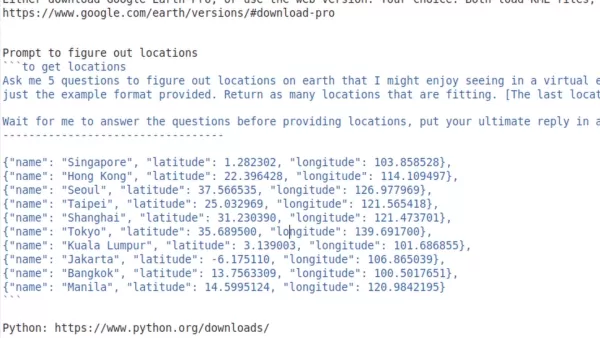
This automation not only saves time but also lets you tweak the tour to your heart's content, ensuring a personalized experience.
Exploring Different Virtual Destinations
The beauty of virtual travel is its limitless possibilities. Whether you're into relaxing on beach retreats, marveling at jungle waterfalls, or conquering mountains, ChatGPT and Google Earth can take you there. Here's a taste of what you might explore:
- Beach Retreats: Imagine lounging on a secluded tropical island or strolling along a vibrant coastal city. With Google Earth, you can almost feel the sand between your toes.
- Jungle Waterfalls: Ever wanted to see the majestic Iguazu Falls up close? Now you can, experiencing the roar of the water and the lush greenery surrounding it.
- Mountain Climbing: From the awe-inspiring heights of Mount Everest to the rugged beauty of the Himalayas, you can explore these peaks without the need for climbing gear.
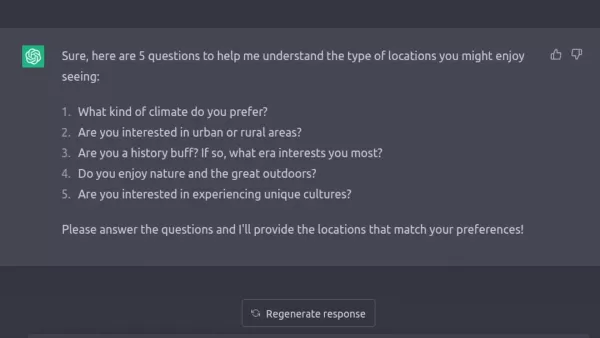
With the right settings in your Python script, you can customize your tour's pace and camera angles, making each virtual visit feel truly immersive.
Understanding Location Data for Google Earth
To ensure your virtual tour runs smoothly, understanding how location data works is key. Each location is represented by its name, latitude, and longitude. In your Python script, this data is typically formatted as a JSON object or a Python dictionary. For example:
{
"name": "Mount Everest",
"latitude": 27.988056,
"longitude": 86.925278
}
This format allows the script to pinpoint each destination accurately, ensuring your virtual tour is both informative and visually engaging.
Step-by-Step Guide to Your Virtual Vacation
Step 1: Set Up Your Environment
Before you start, make sure you've got everything you need:
- Python: Download and install the latest version from python.org.
- Google Earth: Get Google Earth Pro from the Google Earth website.
- simplekml Library: Install this Python library using pip:
pip install simplekml. - Text Editor or IDE: Choose a tool like VSCode, Sublime Text, or PyCharm for coding.
Once everything's set up, you're ready to dive into your virtual vacation planning.
Step 2: Use ChatGPT for Destination Selection
Now, let ChatGPT help you choose your destinations. Craft a prompt that outlines your preferences, like:
'Ask me 5 questions to figure out locations on earth that I might enjoy seeing in a virtual tour. Ask creative questions and return a list of locations in a format such as the following. The locations are not limited to cities, this is just the example format provided. Return as many locations that are fitting. [The last location doesn't have a comma, or a period trailing.] It should end with a `]'
Engage with ChatGPT, providing feedback to refine the suggestions until you have a list of places that excite you.
Step 3: Create Your Python Script for KML Generation
With your destinations in hand, it's time to write your Python script to generate the KML file:
import simplekml
kml = simplekml.Kml()
tour = kml.newgxtour(name="Virtual Vacation Tour")
playlist = tour.newgxplaylist()
locations = [
{"name": "Mount Everest", "latitude": 27.988056, "longitude": 86.925278},
{"name": "Iguazu Falls", "latitude": -25.691944, "longitude": -54.436944},
{"name": "Bora Bora", "latitude": -16.550000, "longitude": -151.742222}
]
for location in locations:
flyto = playlist.newgxflyto(gxduration=5)
flyto.camera.longitude = location["longitude"]
flyto.camera.latitude = location["latitude"]
flyto.camera.altitude = 20000 # Adjust altitude as needed
flyto.camera.heading = 0
flyto.camera.tilt = 0
kml.save("virtual_vacation_tour.kml")
print("KML file generated successfully!")
This script will create a KML file that you can use to explore your chosen destinations in Google Earth.
Step 4: Import and Explore with Google Earth
Finally, open your KML file in Google Earth Pro. Navigate to File > Open, select your KML file, and double-click the tour name to start your virtual journey. You can explore each location manually or let the tour guide you through your chosen spots.
Take your time to soak in the sights, read up on each location, and even use Street View to get a ground-level perspective. It's like traveling the world without leaving your home.
Cost-Effectiveness of Virtual Vacation Planning
One of the best things about planning a virtual vacation with ChatGPT and Google Earth is how budget-friendly it is. Both ChatGPT and Google Earth Pro are available for free, making it an affordable way to explore the world virtually.
Pros and Cons of Virtual Vacation Planning
Pros
- Cost-effective: Minimal to no cost involved.
- Accessible: Can be done from the comfort of your home.
- Time-saving: Automates much of the planning process.
- Customizable: Tailor your experience to your preferences.
- Educational: Learn about new places and cultures.
Cons
- Lack of Physical Presence: You won't actually be there.
- Limited Sensory Experience: Misses out on smells, tastes, and tactile sensations.
- Potential for Technical Issues: Dependent on internet and software performance.
Core Features of AI Vacation Planning
Using AI tools like ChatGPT for vacation planning offers several key features:
- AI-Powered Destination Suggestions: Get personalized recommendations based on your preferences.
- Customizable Tour Generation: Tailor your Python script to create a tour that suits you.
- Immersive Exploration: Google Earth provides a detailed and immersive experience.
These features make virtual vacation planning not just a time-saver but also a deeply engaging and educational experience.
Use Cases for Virtual Vacation Planning
Remote Exploration
Virtual vacation planning isn't just for personal relaxation. It's also a powerful tool for educational exploration. Students, teachers, and lifelong learners can use it to delve into different cultures, environments, and historical events. Google Earth's wealth of information can enhance any learning journey.
Frequently Asked Questions
What is a KML file?
A KML (Keyhole Markup Language) file is used to display geographic data in applications like Google Earth and Google Maps. It's based on XML and can include places, overlays, and tours, along with icons, images, 3D models, and descriptions.
Is Google Earth Pro free to use?
Yes, Google Earth Pro is free to download and use on your desktop from the Google Earth website. While most features are available, some advanced functionalities might require a paid subscription.
Improving Your Virtual Vacation Experience
To make your virtual vacation even better, consider these tips:
- Stable Internet: Ensure a fast and stable connection to stream high-quality images.
- Regular Updates: Keep Google Earth and ChatGPT updated for the latest features.
- High-Resolution Monitor: A better screen can enhance the visual detail of your destinations.
- Optimize Your Python Script: Fine-tune camera settings and transition speeds for a smoother experience.
With these tweaks, your virtual vacation can feel even more real and engaging.
Related article
 MagicSchool.ai vs ChatGPT: Comparing AI-Powered Education Tools
Artificial intelligence continues to reshape educational landscapes, introducing tools like MagicSchool.ai and ChatGPT that empower educators with innovative capabilities. These solutions offer unprecedented support for lesson development, administra
MagicSchool.ai vs ChatGPT: Comparing AI-Powered Education Tools
Artificial intelligence continues to reshape educational landscapes, introducing tools like MagicSchool.ai and ChatGPT that empower educators with innovative capabilities. These solutions offer unprecedented support for lesson development, administra
 Mastercard’s Agent Pay Enhances AI Search with Seamless Transactions
Traditional search platforms and AI agents often require users to switch windows to complete purchases after finding products or services.Mastercard is revolutionizing this process by embedding its pa
Mastercard’s Agent Pay Enhances AI Search with Seamless Transactions
Traditional search platforms and AI agents often require users to switch windows to complete purchases after finding products or services.Mastercard is revolutionizing this process by embedding its pa
 OpenAI Commits to Fixes After ChatGPT's Overly Agreeable Responses
OpenAI plans to revise its AI model update process for ChatGPT after an update caused excessively sycophantic responses, prompting widespread user feedback.Last weekend, following an update to GPT-4o,
Comments (7)
0/200
OpenAI Commits to Fixes After ChatGPT's Overly Agreeable Responses
OpenAI plans to revise its AI model update process for ChatGPT after an update caused excessively sycophantic responses, prompting widespread user feedback.Last weekend, following an update to GPT-4o,
Comments (7)
0/200
![DanielWalker]() DanielWalker
DanielWalker
 August 31, 2025 at 8:30:33 PM EDT
August 31, 2025 at 8:30:33 PM EDT
L'idée de mixer ChatGPT et Google Earth pour des vacances virtuelles est géniale ! 😍 Parfait pour rêver avant de vraiment partir. Dommage qu'on ne puisse pas encore sentir le sable chaud ou l'odeur des pins... mais bon, ça viendra peut-être avec la prochaine mise à jour !


 0
0
![PatrickGarcia]() PatrickGarcia
PatrickGarcia
 August 17, 2025 at 9:01:03 PM EDT
August 17, 2025 at 9:01:03 PM EDT
Whoa, combining ChatGPT with Google Earth to plan a virtual vacation sounds like a game-changer! I’m already imagining exploring Tokyo’s streets without leaving my couch. 😎 Anyone tried this yet? How’s the experience?


 0
0
![ScottPerez]() ScottPerez
ScottPerez
 April 26, 2025 at 3:27:36 AM EDT
April 26, 2025 at 3:27:36 AM EDT
¡Usar ChatGPT y Google Earth para planificar vacaciones es genial! Puedo explorar lugares a los que nunca he ido sin salir del sofá. El único problema es que a veces las sugerencias son un poco turísticas de más. Pero, oye, es una gran manera de inspirarse! 🌍


 0
0
![CarlGarcia]() CarlGarcia
CarlGarcia
 April 26, 2025 at 3:27:36 AM EDT
April 26, 2025 at 3:27:36 AM EDT
Usar o ChatGPT e o Google Earth para planejar férias é genial! Posso explorar lugares que nunca visitei sem sair do sofá. O único problema é que às vezes as sugestões são um pouco turísticas demais. Mas, ei, é uma ótima maneira de se inspirar! 🌍


 0
0
![MateoAdams]() MateoAdams
MateoAdams
 April 26, 2025 at 3:27:36 AM EDT
April 26, 2025 at 3:27:36 AM EDT
ChatGPT와 Google Earth를 이용한 여행 계획은 천재적이에요! 소파에서 움직이지 않고도 가보지 못한 곳을 탐험할 수 있어요. 다만, 제안이 때때로 너무 관광지 위주인 것이 단점이에요. 그래도 영감을 얻기에는 최고의 방법이에요! 🌍


 0
0
![RobertMartin]() RobertMartin
RobertMartin
 April 26, 2025 at 3:27:36 AM EDT
April 26, 2025 at 3:27:36 AM EDT
ChatGPTとGoogle Earthを使った旅行計画は天才的!ソファから動かずに行ったことのない場所を探検できます。ただ、提案が時々観光地すぎるのが難点です。でも、インスピレーションを得るには最高の方法です!🌍


 0
0
Ever felt the urge to escape the daily grind but found yourself stumped on where to go? Let's dive into a cool way to plan your next getaway without even stepping outside your door. By harnessing the power of ChatGPT and Google Earth, you can embark on a virtual vacation that's both exciting and relaxing. Whether you're dreaming of sandy beaches, majestic waterfalls, or towering mountains, this guide will show you how to bring those dreams to life, all from the comfort of your couch.
Why You Need a Virtual Getaway
In our hectic lives, taking a break is crucial for our mental and emotional health. Yet, the thought of planning a vacation can feel overwhelming. That's where the magic of ChatGPT and Google Earth comes in. They offer a seamless way to explore new destinations virtually, providing an immersive experience right at home. By simply answering a few questions about your preferences, ChatGPT can tailor a list of destinations that suit your interests and climate preferences. It's like having a personal travel agent, minus the hassle!

Generating Destination Ideas with ChatGPT
Choosing where to go is often the toughest part of vacation planning. But with ChatGPT, it becomes a breeze. By asking you about your climate preferences, whether you lean towards urban or rural settings, and your interests in history, nature, or culture, ChatGPT can suggest a curated list of places you might love to visit virtually. It's like having a brainstorming session with a friend who knows the world inside out.

Just ask ChatGPT something like, "Ask me 5 questions to figure out locations on earth that I might enjoy seeing in a virtual tour," and you'll be on your way to discovering new spots that match your vibe. You can refine these suggestions through further interaction, making the process not just efficient but also fun.
Automating Google Earth Tours with Python
Once you've got your list of dream destinations, it's time to bring them to life in Google Earth. To make this process smoother, you can create a Python script that automates the creation of a virtual tour. This script uses KML (Keyhole Markup Language) files, which Google Earth reads to navigate your chosen locations. Here's a quick rundown of how the script works:
- Import Libraries: Start by importing the necessary libraries, like simplekml, to handle KML file creation.
- Define Locations: Enter the destinations from ChatGPT, along with their latitude and longitude, into the script.
- Create KML Object: Set up a new KML object to hold your tour data.
- Create Tour and Playlist Objects: These will manage the sequence and settings of your tour.
- Add Locations to Tour: The script will loop through your locations, adding each one with specific camera settings for a seamless transition.
- Save KML File: Finally, save your KML file, ready to be opened in Google Earth.

This automation not only saves time but also lets you tweak the tour to your heart's content, ensuring a personalized experience.
Exploring Different Virtual Destinations
The beauty of virtual travel is its limitless possibilities. Whether you're into relaxing on beach retreats, marveling at jungle waterfalls, or conquering mountains, ChatGPT and Google Earth can take you there. Here's a taste of what you might explore:
- Beach Retreats: Imagine lounging on a secluded tropical island or strolling along a vibrant coastal city. With Google Earth, you can almost feel the sand between your toes.
- Jungle Waterfalls: Ever wanted to see the majestic Iguazu Falls up close? Now you can, experiencing the roar of the water and the lush greenery surrounding it.
- Mountain Climbing: From the awe-inspiring heights of Mount Everest to the rugged beauty of the Himalayas, you can explore these peaks without the need for climbing gear.

With the right settings in your Python script, you can customize your tour's pace and camera angles, making each virtual visit feel truly immersive.
Understanding Location Data for Google Earth
To ensure your virtual tour runs smoothly, understanding how location data works is key. Each location is represented by its name, latitude, and longitude. In your Python script, this data is typically formatted as a JSON object or a Python dictionary. For example:
{
"name": "Mount Everest",
"latitude": 27.988056,
"longitude": 86.925278
}This format allows the script to pinpoint each destination accurately, ensuring your virtual tour is both informative and visually engaging.
Step-by-Step Guide to Your Virtual Vacation
Step 1: Set Up Your Environment
Before you start, make sure you've got everything you need:
- Python: Download and install the latest version from python.org.
- Google Earth: Get Google Earth Pro from the Google Earth website.
- simplekml Library: Install this Python library using pip:
pip install simplekml. - Text Editor or IDE: Choose a tool like VSCode, Sublime Text, or PyCharm for coding.
Once everything's set up, you're ready to dive into your virtual vacation planning.
Step 2: Use ChatGPT for Destination Selection
Now, let ChatGPT help you choose your destinations. Craft a prompt that outlines your preferences, like:
'Ask me 5 questions to figure out locations on earth that I might enjoy seeing in a virtual tour. Ask creative questions and return a list of locations in a format such as the following. The locations are not limited to cities, this is just the example format provided. Return as many locations that are fitting. [The last location doesn't have a comma, or a period trailing.] It should end with a `]'Engage with ChatGPT, providing feedback to refine the suggestions until you have a list of places that excite you.
Step 3: Create Your Python Script for KML Generation
With your destinations in hand, it's time to write your Python script to generate the KML file:
import simplekml
kml = simplekml.Kml()
tour = kml.newgxtour(name="Virtual Vacation Tour")
playlist = tour.newgxplaylist()
locations = [
{"name": "Mount Everest", "latitude": 27.988056, "longitude": 86.925278},
{"name": "Iguazu Falls", "latitude": -25.691944, "longitude": -54.436944},
{"name": "Bora Bora", "latitude": -16.550000, "longitude": -151.742222}
]
for location in locations:
flyto = playlist.newgxflyto(gxduration=5)
flyto.camera.longitude = location["longitude"]
flyto.camera.latitude = location["latitude"]
flyto.camera.altitude = 20000 # Adjust altitude as needed
flyto.camera.heading = 0
flyto.camera.tilt = 0
kml.save("virtual_vacation_tour.kml")
print("KML file generated successfully!")
This script will create a KML file that you can use to explore your chosen destinations in Google Earth.
Step 4: Import and Explore with Google Earth
Finally, open your KML file in Google Earth Pro. Navigate to File > Open, select your KML file, and double-click the tour name to start your virtual journey. You can explore each location manually or let the tour guide you through your chosen spots.
Take your time to soak in the sights, read up on each location, and even use Street View to get a ground-level perspective. It's like traveling the world without leaving your home.
Cost-Effectiveness of Virtual Vacation Planning
One of the best things about planning a virtual vacation with ChatGPT and Google Earth is how budget-friendly it is. Both ChatGPT and Google Earth Pro are available for free, making it an affordable way to explore the world virtually.
Pros and Cons of Virtual Vacation Planning
Pros
- Cost-effective: Minimal to no cost involved.
- Accessible: Can be done from the comfort of your home.
- Time-saving: Automates much of the planning process.
- Customizable: Tailor your experience to your preferences.
- Educational: Learn about new places and cultures.
Cons
- Lack of Physical Presence: You won't actually be there.
- Limited Sensory Experience: Misses out on smells, tastes, and tactile sensations.
- Potential for Technical Issues: Dependent on internet and software performance.
Core Features of AI Vacation Planning
Using AI tools like ChatGPT for vacation planning offers several key features:
- AI-Powered Destination Suggestions: Get personalized recommendations based on your preferences.
- Customizable Tour Generation: Tailor your Python script to create a tour that suits you.
- Immersive Exploration: Google Earth provides a detailed and immersive experience.
These features make virtual vacation planning not just a time-saver but also a deeply engaging and educational experience.
Use Cases for Virtual Vacation Planning
Remote Exploration
Virtual vacation planning isn't just for personal relaxation. It's also a powerful tool for educational exploration. Students, teachers, and lifelong learners can use it to delve into different cultures, environments, and historical events. Google Earth's wealth of information can enhance any learning journey.
Frequently Asked Questions
What is a KML file?
A KML (Keyhole Markup Language) file is used to display geographic data in applications like Google Earth and Google Maps. It's based on XML and can include places, overlays, and tours, along with icons, images, 3D models, and descriptions.
Is Google Earth Pro free to use?
Yes, Google Earth Pro is free to download and use on your desktop from the Google Earth website. While most features are available, some advanced functionalities might require a paid subscription.
Improving Your Virtual Vacation Experience
To make your virtual vacation even better, consider these tips:
- Stable Internet: Ensure a fast and stable connection to stream high-quality images.
- Regular Updates: Keep Google Earth and ChatGPT updated for the latest features.
- High-Resolution Monitor: A better screen can enhance the visual detail of your destinations.
- Optimize Your Python Script: Fine-tune camera settings and transition speeds for a smoother experience.
With these tweaks, your virtual vacation can feel even more real and engaging.
 MagicSchool.ai vs ChatGPT: Comparing AI-Powered Education Tools
Artificial intelligence continues to reshape educational landscapes, introducing tools like MagicSchool.ai and ChatGPT that empower educators with innovative capabilities. These solutions offer unprecedented support for lesson development, administra
MagicSchool.ai vs ChatGPT: Comparing AI-Powered Education Tools
Artificial intelligence continues to reshape educational landscapes, introducing tools like MagicSchool.ai and ChatGPT that empower educators with innovative capabilities. These solutions offer unprecedented support for lesson development, administra
 Mastercard’s Agent Pay Enhances AI Search with Seamless Transactions
Traditional search platforms and AI agents often require users to switch windows to complete purchases after finding products or services.Mastercard is revolutionizing this process by embedding its pa
Mastercard’s Agent Pay Enhances AI Search with Seamless Transactions
Traditional search platforms and AI agents often require users to switch windows to complete purchases after finding products or services.Mastercard is revolutionizing this process by embedding its pa
 OpenAI Commits to Fixes After ChatGPT's Overly Agreeable Responses
OpenAI plans to revise its AI model update process for ChatGPT after an update caused excessively sycophantic responses, prompting widespread user feedback.Last weekend, following an update to GPT-4o,
OpenAI Commits to Fixes After ChatGPT's Overly Agreeable Responses
OpenAI plans to revise its AI model update process for ChatGPT after an update caused excessively sycophantic responses, prompting widespread user feedback.Last weekend, following an update to GPT-4o,
 August 31, 2025 at 8:30:33 PM EDT
August 31, 2025 at 8:30:33 PM EDT
L'idée de mixer ChatGPT et Google Earth pour des vacances virtuelles est géniale ! 😍 Parfait pour rêver avant de vraiment partir. Dommage qu'on ne puisse pas encore sentir le sable chaud ou l'odeur des pins... mais bon, ça viendra peut-être avec la prochaine mise à jour !


 0
0
 August 17, 2025 at 9:01:03 PM EDT
August 17, 2025 at 9:01:03 PM EDT
Whoa, combining ChatGPT with Google Earth to plan a virtual vacation sounds like a game-changer! I’m already imagining exploring Tokyo’s streets without leaving my couch. 😎 Anyone tried this yet? How’s the experience?


 0
0
 April 26, 2025 at 3:27:36 AM EDT
April 26, 2025 at 3:27:36 AM EDT
¡Usar ChatGPT y Google Earth para planificar vacaciones es genial! Puedo explorar lugares a los que nunca he ido sin salir del sofá. El único problema es que a veces las sugerencias son un poco turísticas de más. Pero, oye, es una gran manera de inspirarse! 🌍


 0
0
 April 26, 2025 at 3:27:36 AM EDT
April 26, 2025 at 3:27:36 AM EDT
Usar o ChatGPT e o Google Earth para planejar férias é genial! Posso explorar lugares que nunca visitei sem sair do sofá. O único problema é que às vezes as sugestões são um pouco turísticas demais. Mas, ei, é uma ótima maneira de se inspirar! 🌍


 0
0
 April 26, 2025 at 3:27:36 AM EDT
April 26, 2025 at 3:27:36 AM EDT
ChatGPT와 Google Earth를 이용한 여행 계획은 천재적이에요! 소파에서 움직이지 않고도 가보지 못한 곳을 탐험할 수 있어요. 다만, 제안이 때때로 너무 관광지 위주인 것이 단점이에요. 그래도 영감을 얻기에는 최고의 방법이에요! 🌍


 0
0
 April 26, 2025 at 3:27:36 AM EDT
April 26, 2025 at 3:27:36 AM EDT
ChatGPTとGoogle Earthを使った旅行計画は天才的!ソファから動かずに行ったことのない場所を探検できます。ただ、提案が時々観光地すぎるのが難点です。でも、インスピレーションを得るには最高の方法です!🌍


 0
0

